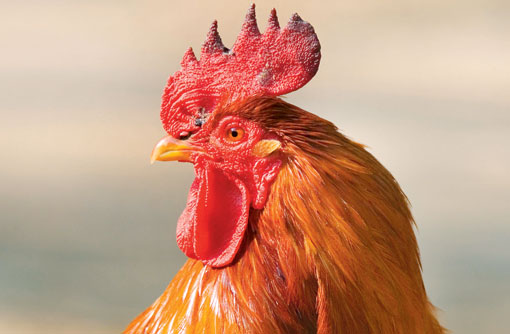Hens selective in choice of partners

Hens are highly selective when it comes to choosing the paternity of their eggs and have evolved the ability to eject the sperm of subordinate males, scientific research has revealed.
Scientists from Oxford University and the University of Uppsala in Sweden found hens were able to eject sperm following copulation, so neutralising 80% of it.
Rebecca Dean, who conducted the research as part of her PhD in collaboration with Tom Pizzari, from Oxford University, said sperm ejaculation was an effective way for females to bias a male’s chance of successful fertilisation.
Dr Dean said the whole point of the exercise was to see whether this could be a female choice mechanism.
“My supervisor had already studied sperm ejection in the population I used, but I wanted to look at it in more of a controlled environment,” she told Poultry World. “So I used a controlled copulation technique, where the female was held into a crouched position.”
Working with feral fowl at Tovetorp Zoological Research Station, at Stockholm University, scientists measured both the probability of sperm ejection and the proportion of semen ejected in 30 females.
Dr Dean also observed the social hierarchy of males by analysing the physical characteristics of different cockerels before randomly assigning females to mate with males.
Traits measured included age, body mass, comb size and social status, with age emerging as one of the more important determinants of female preference and mating ability.
Two cameras, positioned 3m behind the female and at right angles, were able to capture the process and from there the scientists were able to record copulation success or failure.
The research found that hens were more likely to eject sperm after successive matings and favoured their first partners in comparison to later ones.
Subordinate males suffered from a higher proportion of sperm ejection compared to their dominant counterparts, giving them the advantage.
The research, which took two years to complete, with work being conducted in four-monthly cycles, also found that roosters lower down in the sexual pecking order have fought back, developing larger ejaculates in the hope of increasing their chances of a successful mating.
But, according to Dr Dean, it’s been to no avail, with smaller ejaculates being favoured by females and larger ones carrying a higher risk of being ejected.
“Socially dominant males suffer lower sperm ejection intensity than subdominant males. This result helps explain the relationship between sperm ejection risk and male status.
“The hens preferred to mate dominant males, so we found they ejected a greater proportion of the ejaculate from socially subordinate males.
“Sperm ejection is seen in a number of breed species across the animal kingdom and it’s certainly possible for it to happen in some domestic versions,” she added.
However, normally domestic chickens would have fewer mating choices than their wild Swedish comrades.
Many species, from zebras to insects use the strategy of sperm ejection, although the significance of sperm ejection remains largely unresolved.
“An important future challenge will be to verify the extent to which patterns detected by this study are representative of more natural populations and different species,” said Dr Dean.
* The research was first published in the journal The American Naturalist.
